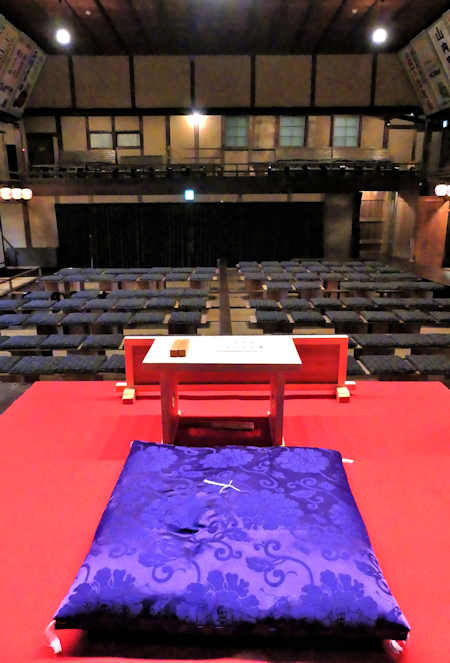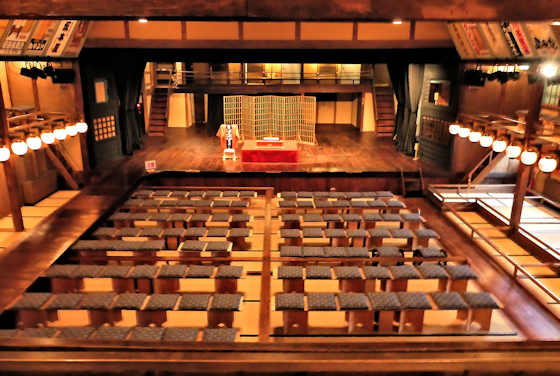Wednesday, May 14, 2025
Mitarai Historic Preservation District
Thursday, April 27, 2023
Odeonza Theater Wakimachi
Located in the small rural town of Wakimachi in rural Tokushima, the Wakimachi Gekijo is a fine example of an early 20th Century Japanese theater.
Due in large part to the bombing of most of Japan's major cities during WWII, and also partly to the late 20th Century Japanese tendency to demolish “old” buildings and replace them with newer, modern structures, very few examples of historic theaters still exist, and those that do are to be found in similar rural environments, like the Kaho Gekijo in Iizuka, Kyushu, or the Eirakukan Theatre in Izushi, Hyogo.
The Wakimachi Gekijo was built in 1934 with a capacity of 750, primarily for kabuki, and other popular entertainments like rokyoku, a form of storytelling with shamisen accompaniment.
In the postwar period it was converted into a cinema, though occasionally other types of entertainment would be performed. With the massive rural population drain to the big cities the theater, like so many others in similar situations, became uneconomical to operate and closed its doors in 1995.
It was scheduled for demolition, but before that happened it was used as the setting and location for a movie about a run-down rural cinema. Directed by Yoji Yamada, the man responsible for the very successful “Tora-san” movie series, and starring Toshiyuki Nishida, the 1996 release of The Man Who Caught The Rainbow (虹をつかむ男 ) sparked an interest in the cinema and led to it being renovated and reopened where it is now often known as Odeon-za, it's name in the movie. Occasional performances do take place, but it is primarily a tourist attraction now.
Open from 9 to 5 and closed on Tuesdays, entry is 200 yen, 100 yen for children. There is also a special reduced price ticket that includes entry to the nearby Yoshida Residence.
140-1 Nishibun, Mima-shi, Tokushima 779-3602
Tel 0883 52 3807
Friday, December 9, 2022
Eirakukan Kabuki Theatre
Eirakukan Kabuki Theatre
Located in the former castle town of Izushi in northern Hyogo, the Eirakukan is a traditional Japanesekabuki theatre open to the public.
Built in 1901 it is the oldest kabuki theatre in Kansai, and the oldest kabuki theatre in Japan still standing on its original site.
The theatre closed down in 1968 and was then renovated and restored and opened again in 2008 and while there are occasional perfrmances, it is primarily a tourist site now.
All parts of the theatre can be explored by visitors, including te stage and backstage areas. A highlight is going underneath the stage to see how the revolving stage, the mawari-butai, is operated.
There is a lot of advertising, inside and out, not just for the famous kabuki actors, but mostly for the sponsors and local companies.
I was maybe not as impressed as many visitors, probably because I had previously visited a couple of larger kabuki theatres down in Kyushu. The Kaho Gekijo Theatre in Iizuka, Fukuoka, has the largest revolving stage in Japan, and the Yachiyo-za in Yamaga, Kumamoto, both are somewhat larger than the Eirakukan.
Wednesday, May 5, 2021
Yachiyo-za Theatre
Yachiyo-za is a traditional type of theatre that is located in the hot spring resort town of Yamaga, not far from Kumamoto City.



























































